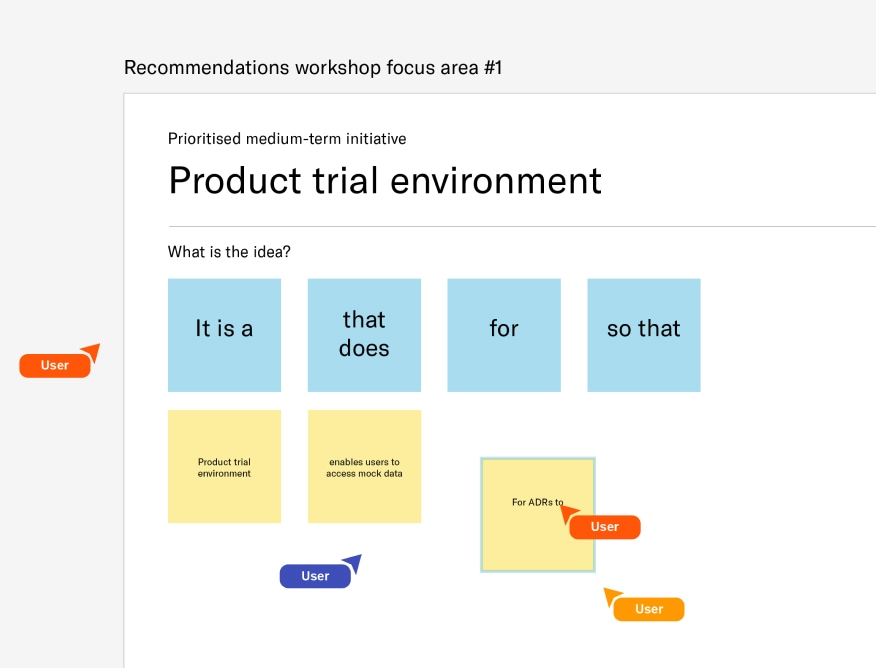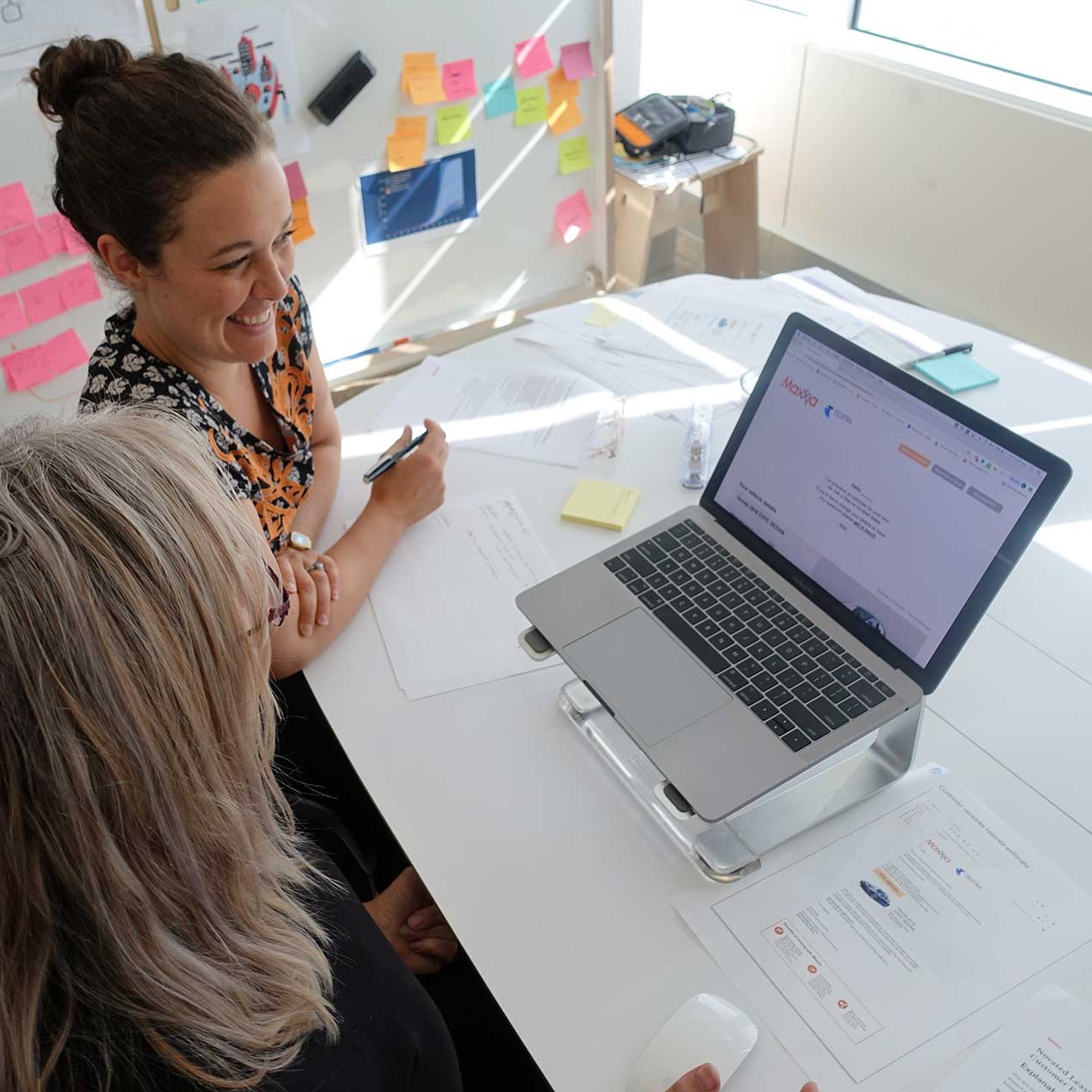Victoria Police
Mapping Drug‑Driving Triggers to Power a United Response
Victoria Police engaged Paper Giant to create a visual representation of drug-driving journeys, from driver decisions to potential outcomes. Our aim was to identify opportunities for improved collaboration between road safety partners and help reduce road trauma in Victoria.
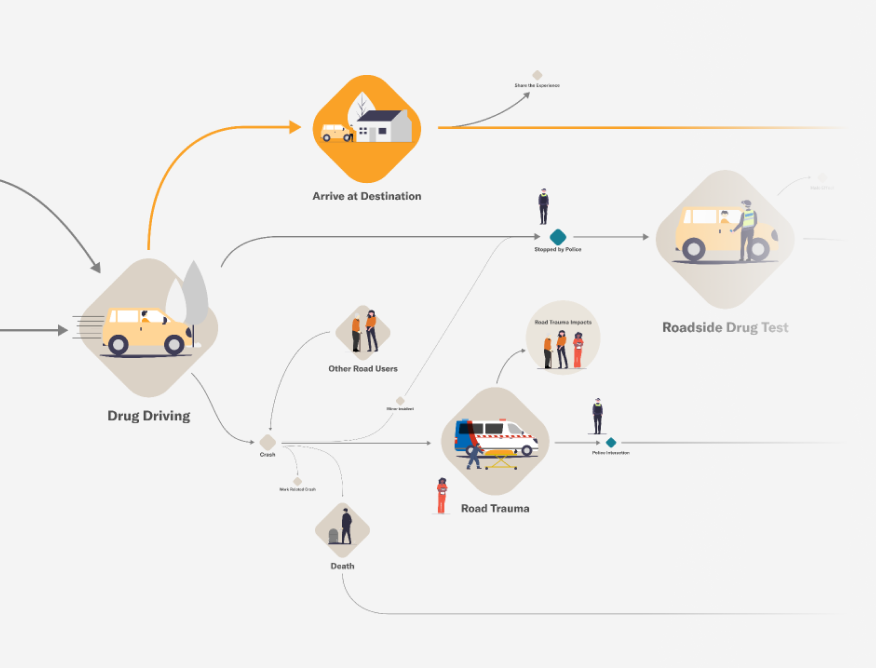
Outcomes
- A clear, visual representation of drug-driving choices and outcomes to aid in the development of deterrence strategies and help reduce road trauma
- A companion report elaborating on consultation outcomes, current pain points, insights and opportunities for improvement
- An enhanced understanding of how different agencies and stakeholders are involved at different stages of the journey, and identification of opportunities for improved cooperation
Services
- Journey mapping
- Current state research
- Deep-dive workshops
Sectors
The drug-driving ecosystem
Drug driving is a major contributor to road trauma in Victoria. In the last five years, around 41% of driver and motorcyclist fatalities tested had illicit drugs in their system. The severity of this issue is recognised and addressed through the work of the Road Safety Partnership, which includes Victoria Police, the Transport Accident Commission, the Department of Transport, the Department of Health, and the Department of Justice and Community Safety.
Victoria Police engaged Paper Giant to shape a detailed understanding of the drug-driving system, including the critical factors that contribute to drug driving, the roles and responsibilities of road safety partners and the policy and funding decisions that contribute to the current state of drug driving in Victoria.
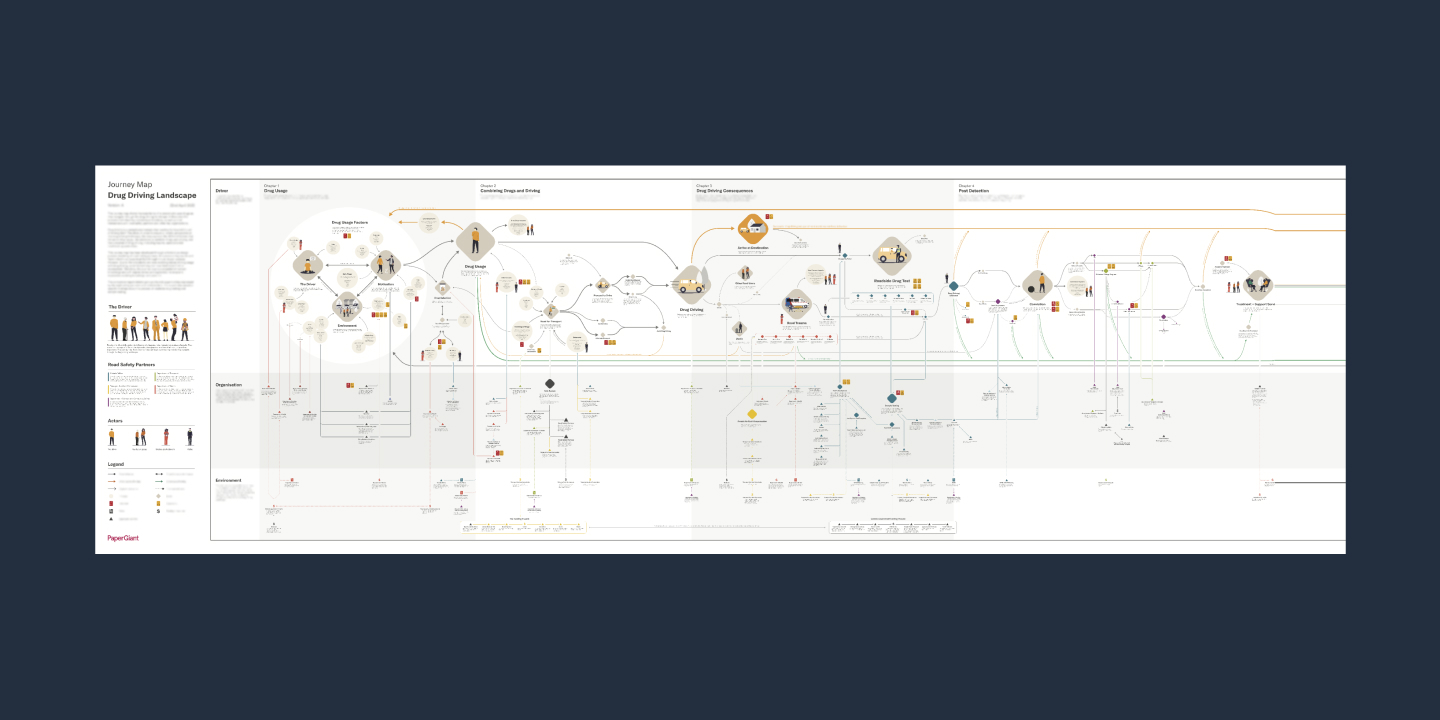
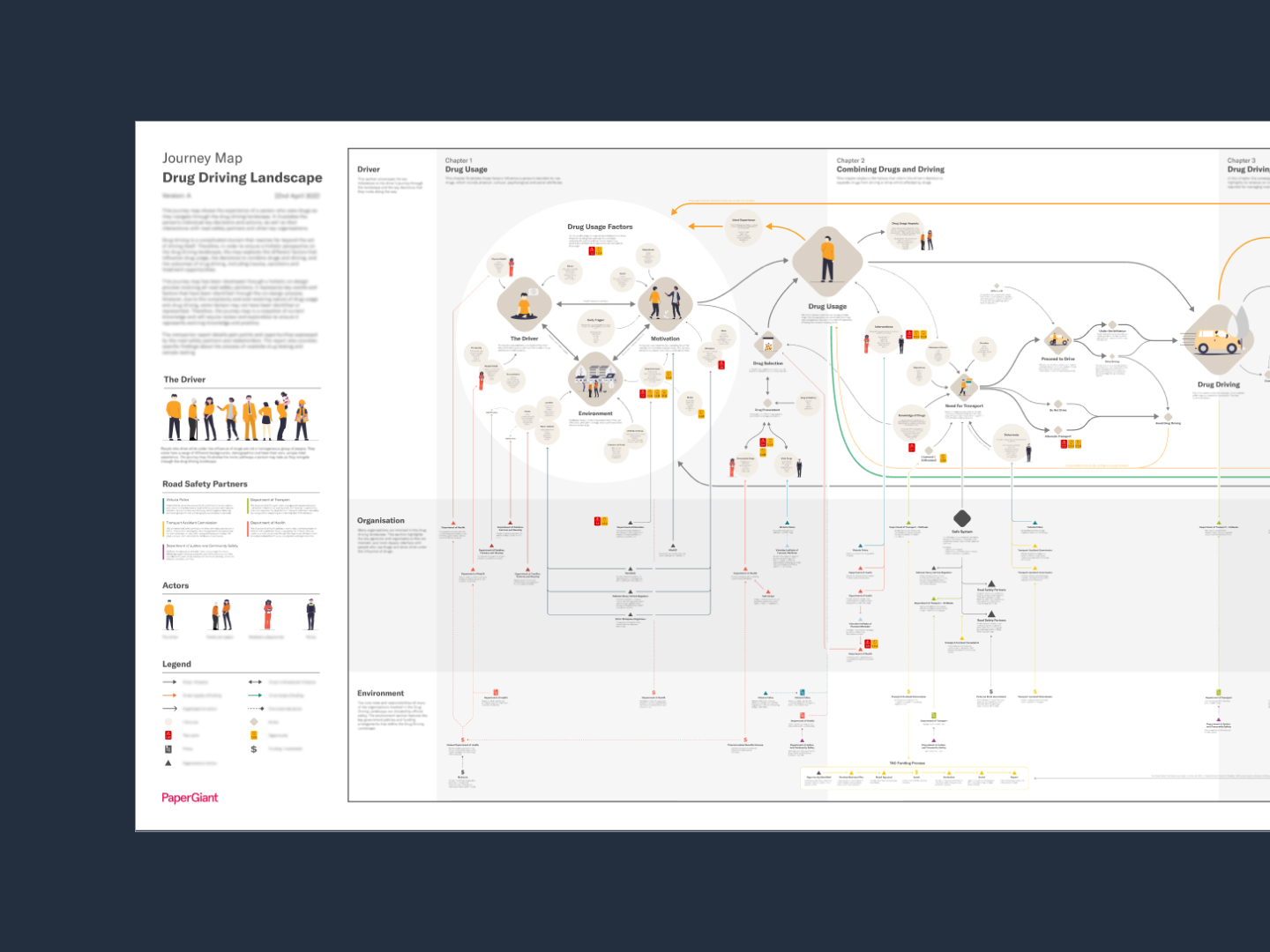
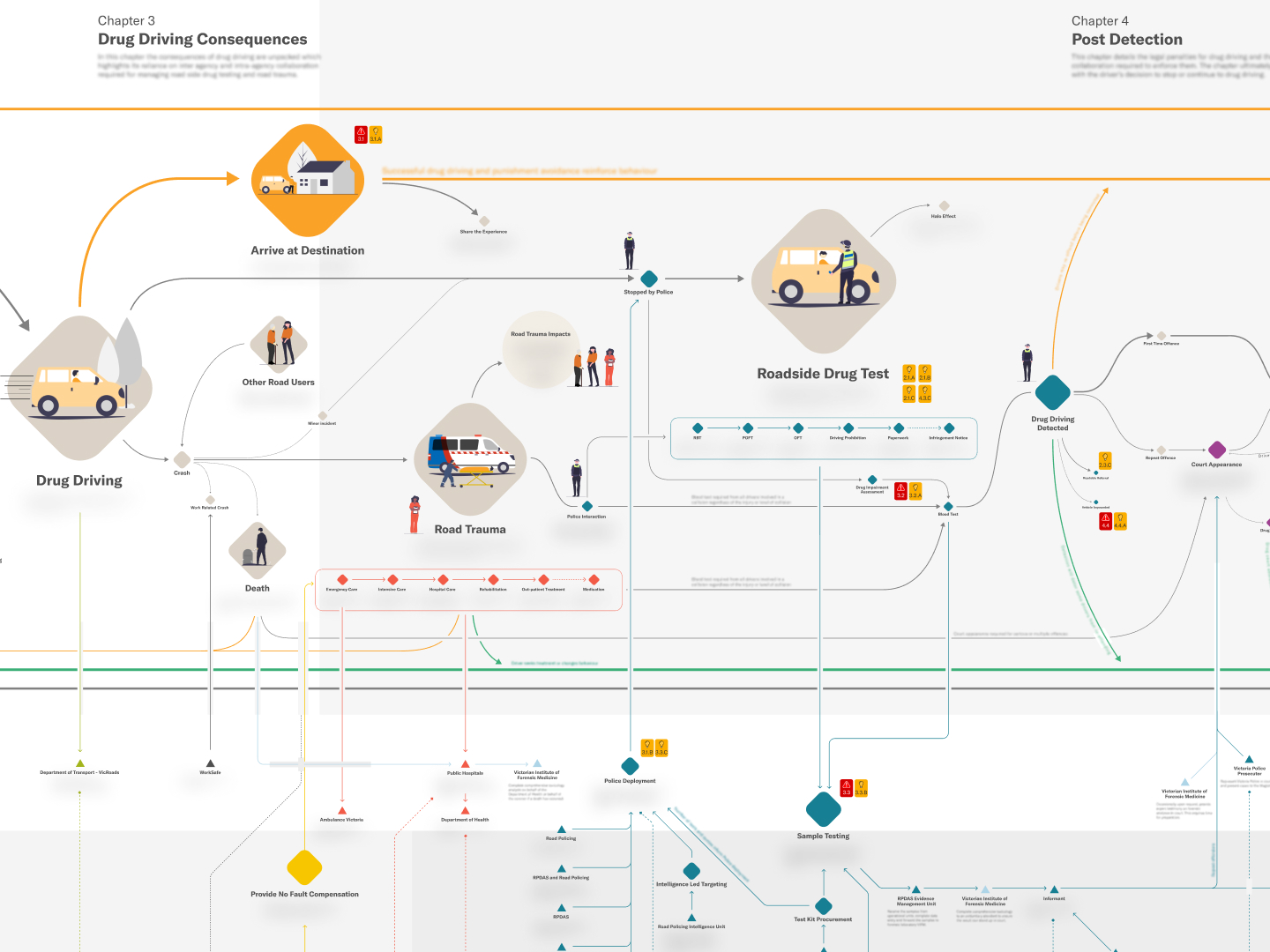
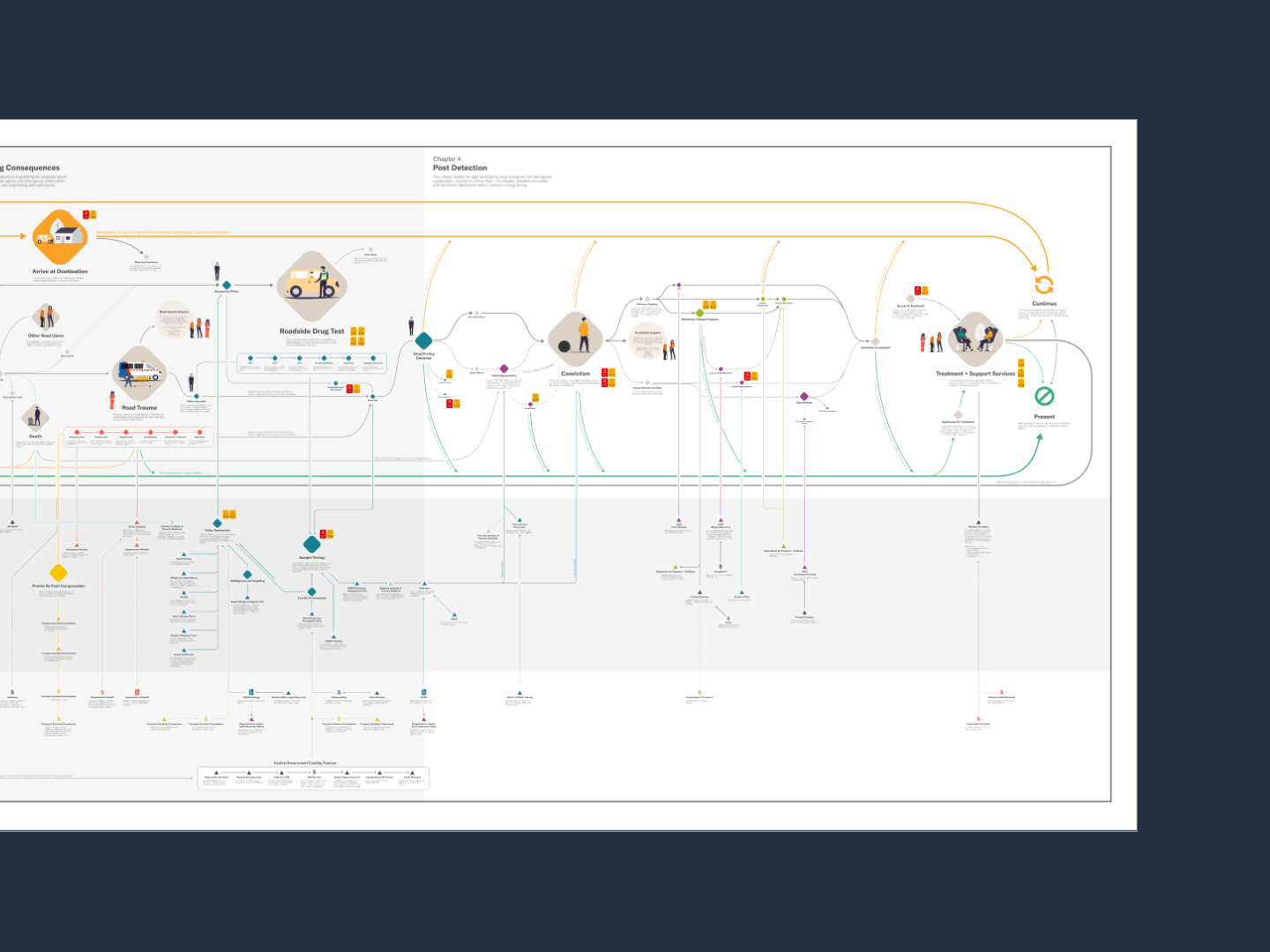
Drug Driving Landscape : The journey map explores the motivations and factors behind drug use, the driver’s decision to drive and their journey post detection.
Researching drug driving
Over 12 weeks, we conducted 21 in-depth interviews and 5 collaborative workshops with the road safety partners and other key stakeholders with expert knowledge on drug use, road safety, enforcement or related legislation and policy.
We used the principles of co-design to build a shared understanding amongst the partners of how each agency's actions contributed to the system's complexity and the pain points and opportunities. Our process ensured all partners understood the value of the journey map and its applicability in future policy and drug-driving deterrence initiatives.
Mapping drug-driving decisions and outcomes
Our drug-driving journey map is an action-oriented representation of the drug-driving journey across four chapters: drug usage, combining drugs and driving, drug-driving consequences and post-detection. It’s a complex narrative representing the journey's key moments and multiple outcomes.
Alongside a driver’s perspective, the journey map illustrates the roles of the road safety partners and related stakeholders; their purpose, their relationships and communication channels. The map identifies pain points and opportunities for better cooperation at crucial stages.
